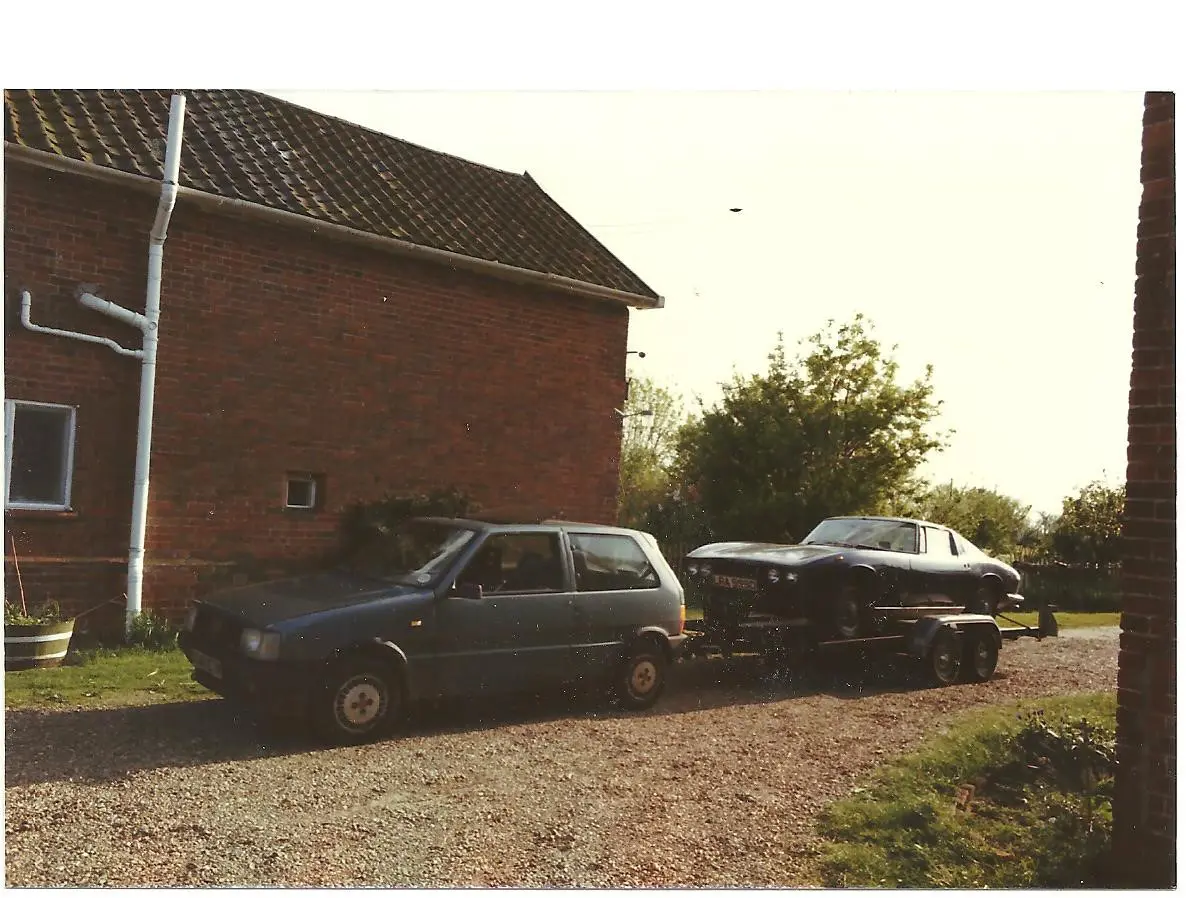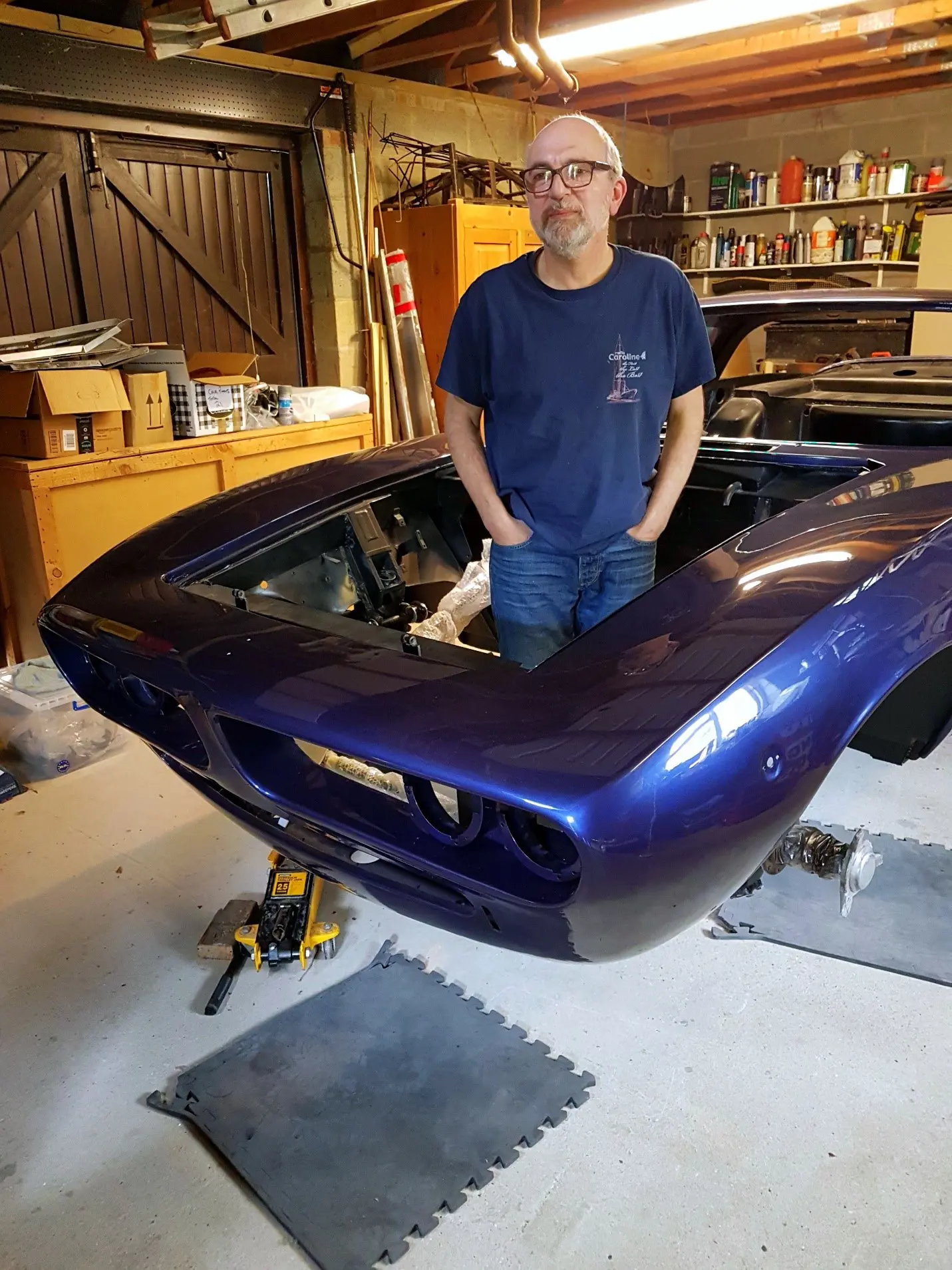Meet The Owner – Peter’s tells his story of a 38-year journey with his Iso Grifo GL350 1966
29 August 2024
In my late teens I spent four years in New Zealand and worked for a couple of years in the workshop at the Ferrymead Trust Historic Transport Museum. During that time I had a number of lovely cars as running restoration projects including a Mk 1 and an Mk8 Jaguar, a 1937 Internation coach-built Herse and an Austin A40 Somerset. When I returned to the UK, I continued my love of vehicles with an old XJ6, a Piper and a TVR. None of these prepared me for the difficulty and complexity of restoring an Italian handmade car.
ISO started life as a general manufacturing concern making refrigerators and heaters and similar things. After the war, Renzo Rivolta decided to branch out into affordable motorbikes and small commercial vehicles. Later his team designed and built the Isetta car which was also licensed to Vellem (France) and BMW and others, and also made in the UK by BMW in Brighton.
In the early 1960s, Renzo recognised that with the world economy no longer in post-war austerity, that it was time for him to shift the business to luxury cars. The first car launched was 4-seater 2-door coupe, the ISO Rivolta GT, more commonly known as the Rivolta. The chassis was designed in house in conjunction with Giotto Bizzarrini, ex-chief engineer at Ferrari, who left following the ‘Palace Revolt’ and was responsible for the 250 GTO amongst other cars. Bizzarrini intended to go racing against Ferrari, and so the chassis was designed to be both suitable for a luxury GT and also for a sports racing car.

The Rivolta GT had a body designed by the young Guiguaro at Bertone. Guiguaro also designed the Iso Grifo A3/L (Lux) and ISO Grifo A3/C (Competition) that were shown at the ’63 Turin Motor Show. 2A3/Ls were built,a convertible and a coupe. The coupe formed the basis for the production GL Grifo. The A3/C was produced in small volumes originally by ISO, and when Bizzarrina and Renzo fell out, Bizzarrina started producing the cars himself called unsurprisingly, Bizzarrinis. The A3/Cs won their class at Le Mans.
The ISO Rivolta GT and the Grifo share a variant of the same platform chassis and were initially available with a base 300hp engine, with options for 340hp 350hp and 365hp all borrowed from Corvettes, and with 4-speed manual and 2- or 3-speed automatic boxes. Also available as an option in the ISO Rovolta GT was a version of the Corvette 340/365HP engine fitted with a Bizzarrini-designed manifold with four weber 45 side draft carburettors, known as ‘The ISO Rivolta GT IR340 4 carb’ and which produced around 400hp. Late in ’66 the ZF 5-speed S5-325 5-speed gearbox became available as an option, and two years later the Grifo had the option of the ‘Big Block’ 7-litre engine.
I bought my Grifo as a non-runner in a poor state of repair from Bill Dick, a colourful character who was a Concorde Pilot and a collector of eclectic cars (everything from Maseratis, Jensens and ISOs to a Cisitalia and a litter of Reliant Kittens) The Grifo had been broken into and had plexiglass side windows as a result. The steering lock/ignition switch had been smashed, and the same had happened to the fuel filler lock. The front bumper was missing, the sills had been welded without removing the quilted leather trim from the inner sill leaving the bottoms charred. The engine and gearbox were not in the car. A few bits and pieces were missing. But the car was straight and undeniably beautiful.

The first job on the car was the biggest and I took the plunge in 1993 to get the rust and bodywork fixed. I chose Chris Lawrence at Wymondham Engineering to do the work. Chris’s business made new tubs for Lamborghini Muiras, replica Ferrari 250GTs and Maserati 450Ss. He was the only person sanctioned by Lamborghini to build the official Jota replica. And, his sheet metal skills were amazing. Unfortunately, the bill came to 3 times the maximum estimated. More than I had in the world. So, the car was put aside for a good long time. During the hiatus, I did some small projects on the car restoring this and that, but nothing major.
Sometime around 2010 or so, my wife and I made a deal – she was doing a self-funded law PhD at Cambridge. The deal was as soon as she finished, I would apply what spare cash resources we had to get the Grifo finished. I had this horrible thought, that if I did not push on with it in a timely way, I might never complete it.
From about 2016 onwards I worked hard on the Grifo, restoring every part from suspension to the electric window regulators, etc. Clearly, I had help. John at Mass Racing rebuilt the engine, lowering the compression so that it can run on today’s horrible fuel (just). Al Wilshire in Wales did the paintwork, and Richard Felton did an extraordinarily fantastic job on the interior. Covid was my friend in giving extra time to work on the car while socialising was seen as anathema. I am lucky to have a wife who shares my passion for old cars and has helped me on numerous occasions holding spanners on the other side of panels, helping bleed brakes, and putting up with me making the wiring loom for the car on the sitting room floor.

Last year we finally got to drive the car. The first drive to the Barrington car meet, was not a pleasant experience as the clutch was slipping and making horrible noises which required the engine and gearbox to come out. I had an issue with the rear suspension that neither I, nor all my car restoration colleagues, could identify. Finally, I found that the source of a nasty clunk was an internal fault in one of the rear shock absorbers that had been rebuilt by one of the KONI-authorised centres. Apart from that, I had an intermittent charging issue that I resolved after the car’s first big trip this year when we attended the Goodwood 10th Breakfast meet.
My Grifo is the 4th right-hand drive Grifo made. The car was ordered by the UK concessionaires, Trojan, for Eton Motors in Knightbridge. The specification was the base 300HP engine and the 4-speed gearbox, Monthlehry Blu paint and Pelle Beige interior.
In 1964, the ISO stand at the Earls Court Motor show had an ISO Rivolta GT IR340 4-carb displayed. In around 1967, the engine and gearbox from my Grifo were transplanted into the ISO Rivolta GT and my Grifo received the differential from the GT. At the same time, my car received a brand new L79 350hp engine and the fabulous ZF S5-325 gearbox. The work was carried out in the UK (to a pretty poor standard). I suspect that the owner of the GT was persuaded to change his drive train to a more civilised variety, the 340 4-carb engine probably was put into service in one of the racing Grifo A3/Cs, and it was all paid for by the owner of my Grifo.
The ISO Rivolta GT was scrapped in the early 1970s. My Grifo’s original engine and gearbox were then pressed into service in an Aston Martin DB4, used to tow cars and bikes to the racetrack. Still later, the engine and gearbox were used in a Cobra replica demonstrator for a car builder in Newmarket.
While the car’s engine and gearbox history is documented, my Grifos history is anything but. From the date of arrival in the UK on 15 June 1966 till the time it was bought by Bill Dick in 1984 and reregistered, no history is known. This is surprising. The people who bought these tended to be well known and flamboyant. The Earl of Lichfield, Twiggy, Tony Iommi, Mike Hailwood, etc. My car had been about and had done more than 50K miles. It had several forecourt resprays. Over the last 30 years I have followed every lead to attempt to find anything about the early life of the car – but without success. If any of this jogs a memory of one of your readers, I would really like to hear from them!
